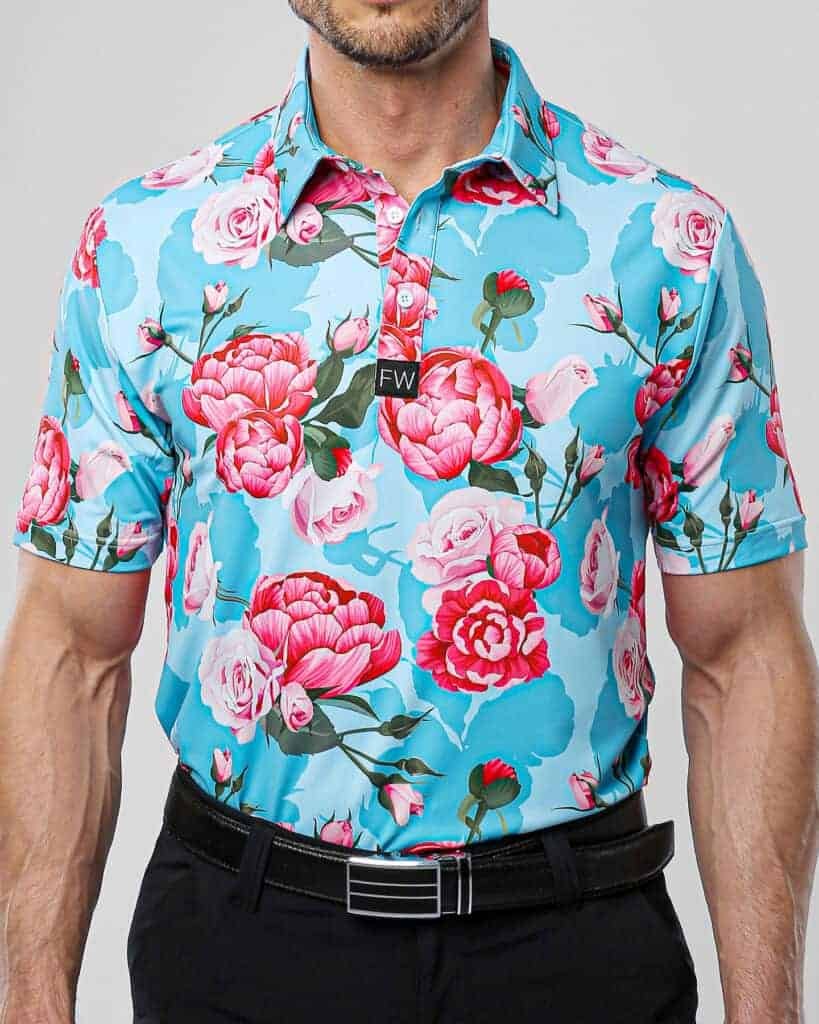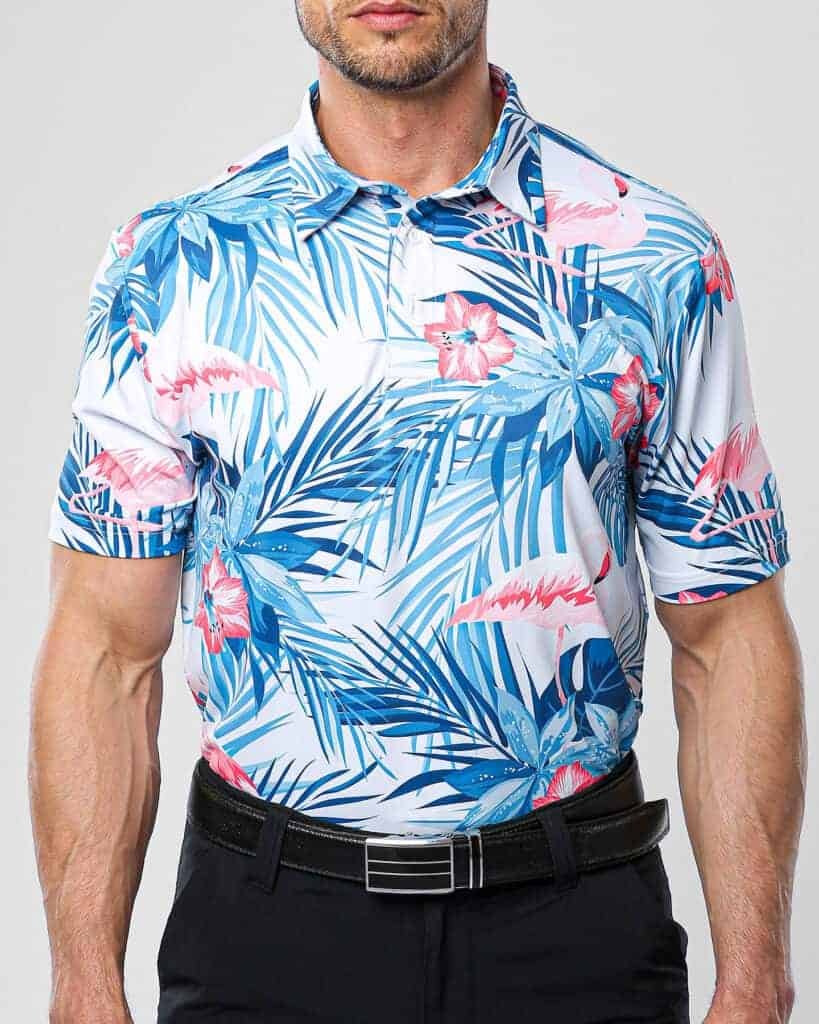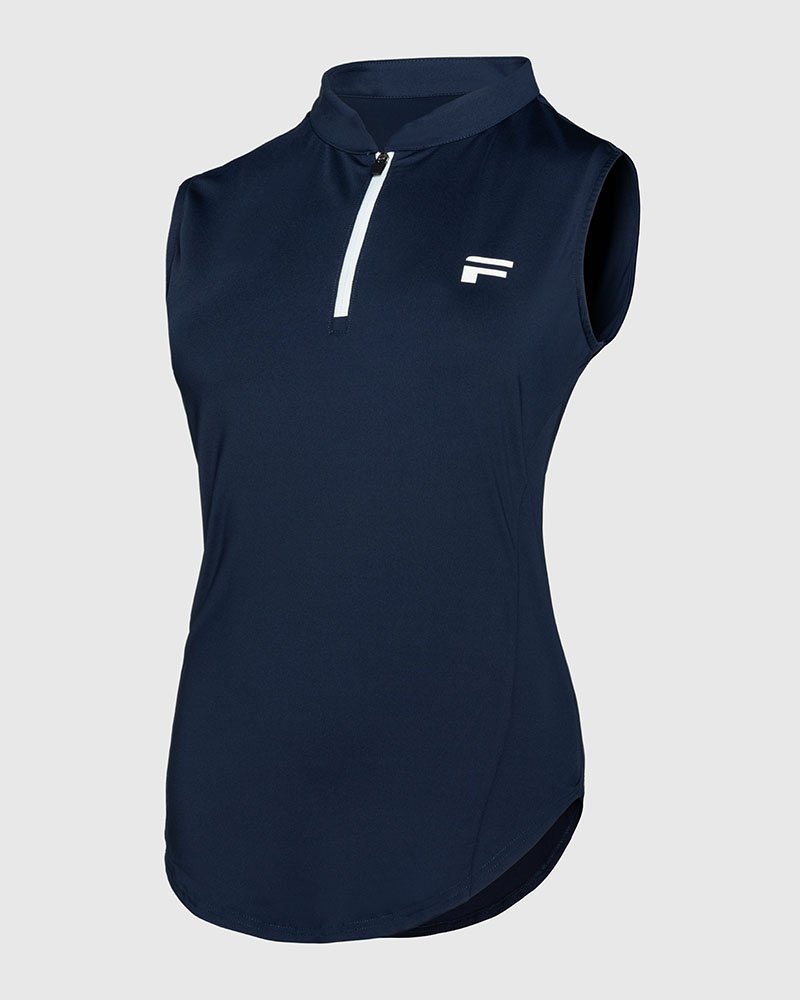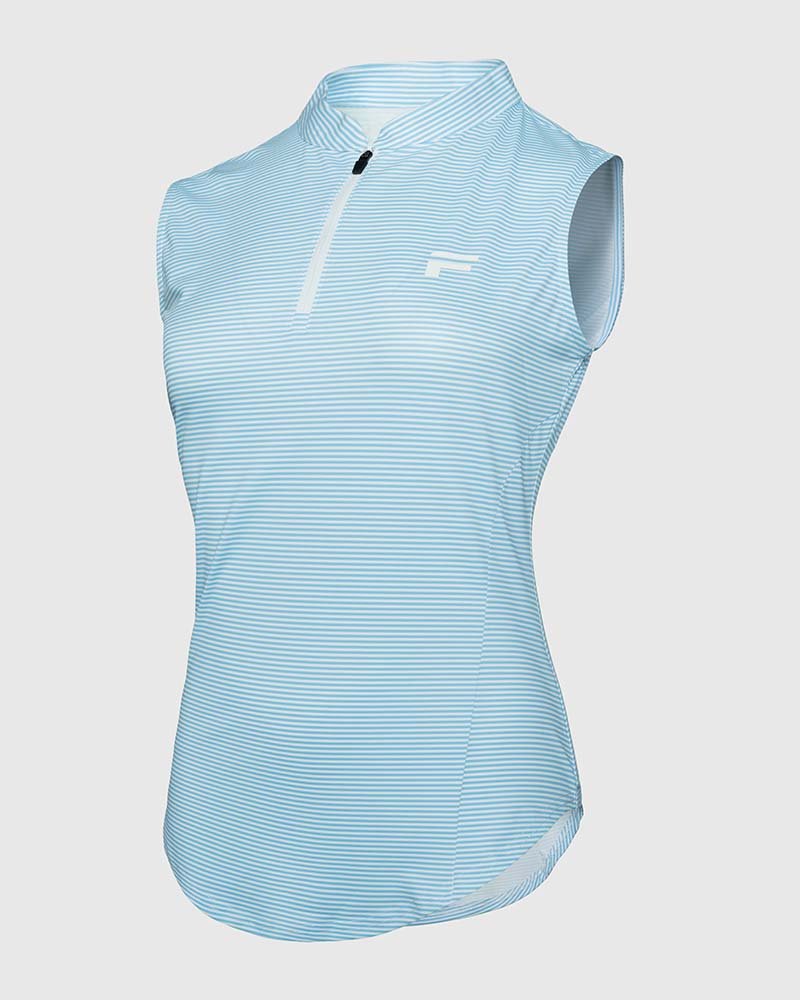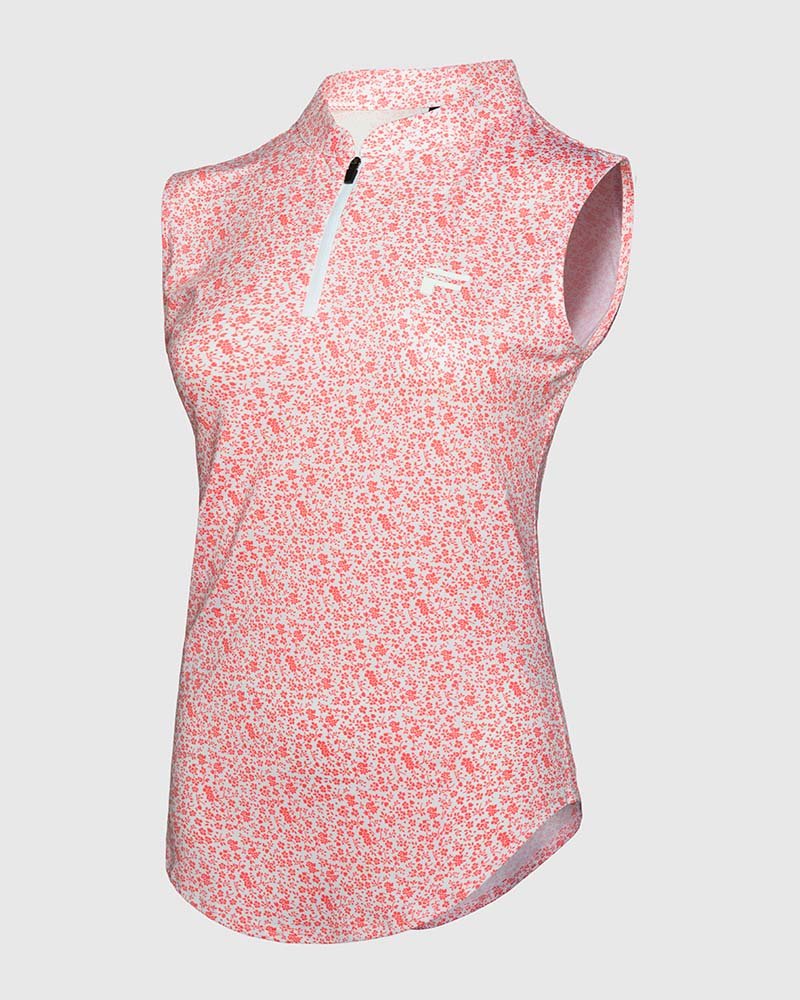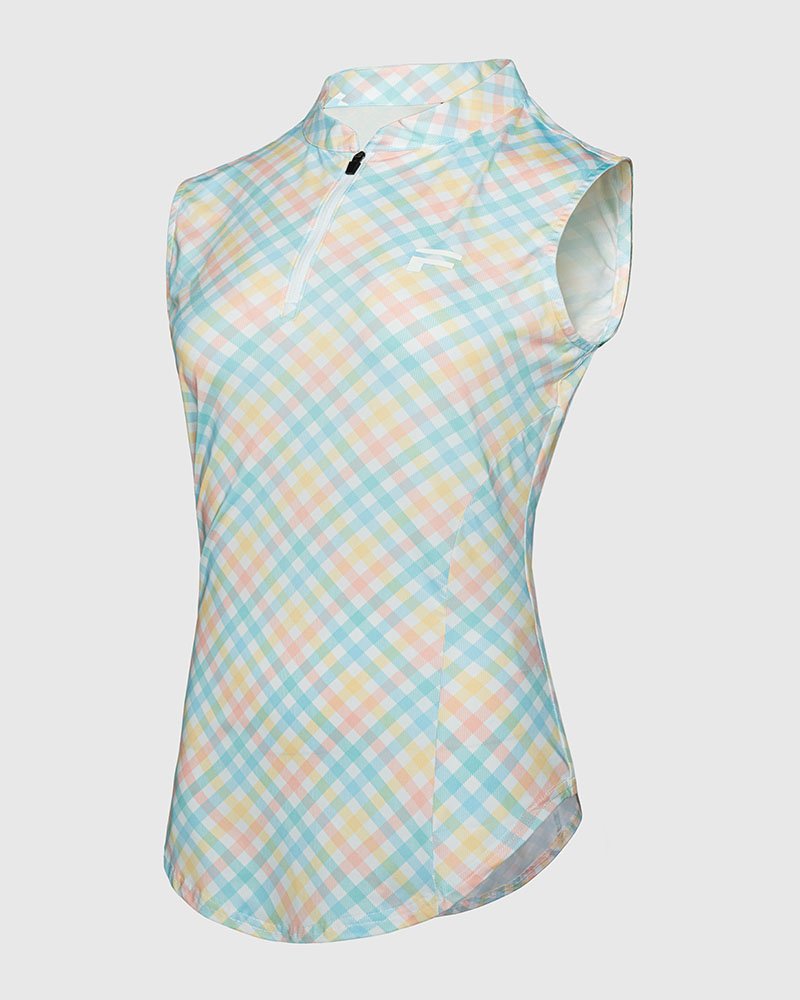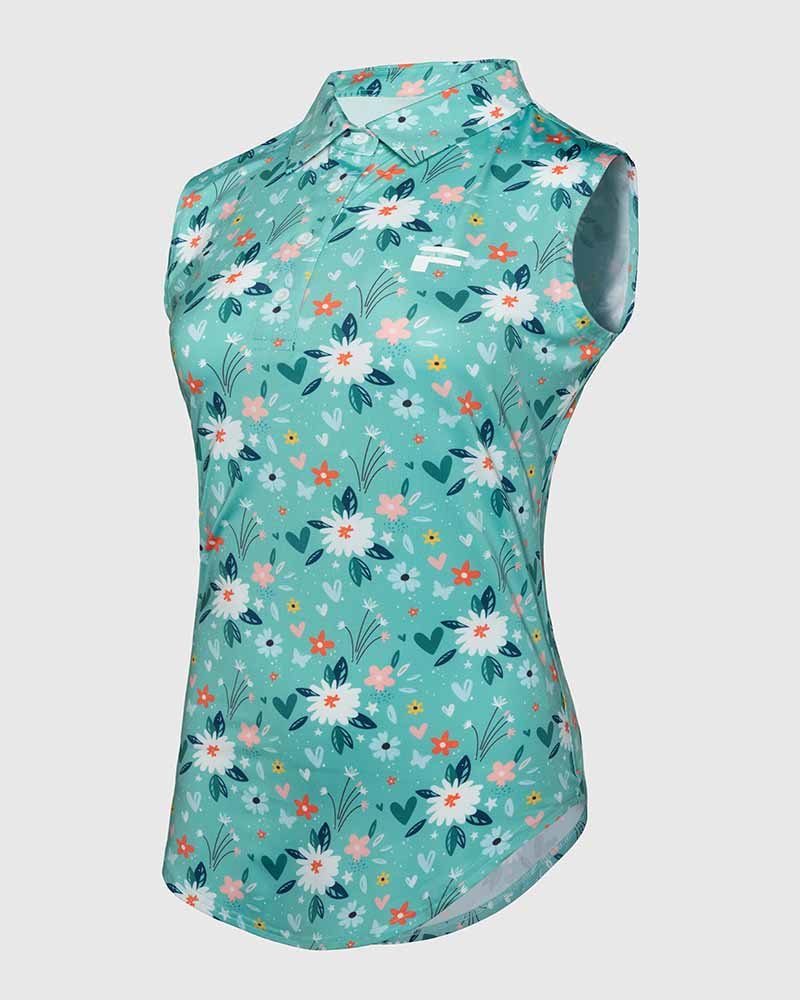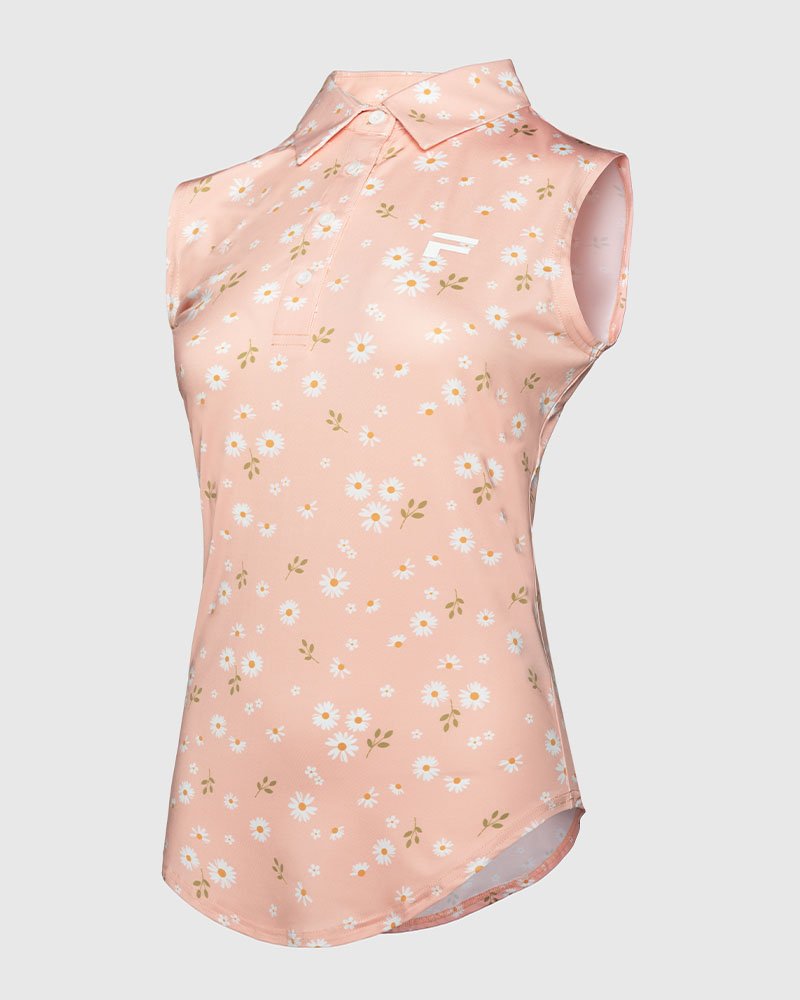
Creating a custom golf apparel line is an exciting journey, but it involves multiple steps to ensure quality, style, and performance. From market research to post-production support, every stage plays a crucial role in crafting the perfect golf apparel that meets customer expectations.
The custom golf apparel production process involves several key stages, including market research, design, material selection, customization, manufacturing, and quality control. Each step ensures the final product aligns with brand vision, performance requirements, and customer preferences, making it essential for brands to follow a structured approach.
Understanding this process can help you bring your vision to life with confidence.
Market Research & Concept Development
(1) Market Research
Market research for golf apparel includes analyzing industry growth, target demographics, and key competitors. Research sources include industry reports, social media trends, and customer reviews. Understanding factors like fabric preferences, price points, and sustainability concerns1 can help shape a competitive product line.
Key Factors in Market Research
Industry Trends
- The golf apparel market is growing due to increasing interest in golf and athleisure wear.
- Sustainability and performance fabrics are gaining popularity.
- Customization and limited-edition collections are appealing to niche markets.
Consumer Preferences
- Golfers prefer moisture-wicking, stretchable, and breathable materials.
- Brand loyalty plays a big role, especially for premium brands.
- Younger generations look for modern styles that can be worn on and off the course.
Competitor Analysis
| Brand | Strengths | Weaknesses |
|---|---|---|
| Nike Golf | Strong brand recognition, innovation | Higher price points |
| Adidas Golf | Sustainability focus, wide reach | Less premium perception |
| Peter Millar | Luxury appeal, high quality | Limited accessibility |
By analyzing these factors, you can pinpoint gaps in the market and opportunities to differentiate your brand.
(2) Concept Development
Once you understand the market, it's time to build a brand that stands out.
Concept development involves defining your brand’s mission, designing apparel that aligns with market demands, and creating a strong identity. Successful brands balance functionality with aesthetics, ensuring their designs appeal to both traditional and modern golfers.
Steps to Develop Your Concept
a .Define Your Brand Identity
- What values does your brand represent? (e.g., performance, sustainability, affordability)
- Will your apparel target high-end or budget-conscious consumers?
- What unique elements will differentiate your brand?
b. Product Design and Innovation
- Choose high-performance fabrics2 that enhance comfort and mobility.
- Incorporate stylish yet functional features (e.g., UV protection, stretch fit).
- Offer customization options for branding and personal style.
c. Marketing and Positioning
- Leverage influencer marketing and professional golfer endorsements.
- Utilize digital channels like Instagram and TikTok for brand awareness.
- Develop a compelling brand story to connect with customers.
✅ Market research identifies customer needs.
Understanding preferences ensures relevant product development.
❌Market research is optional for success.
Skipping this step risks producing irrelevant designs.
Design & Prototyping
Designing and prototyping golf apparel involves multiple stages, from initial concept ideation to final adjustments. The process includes brainstorming, technical design development, prototype creation, fitting sessions, and approval before production. Each step ensures the apparel meets performance, comfort, and aesthetic standards for golfers.
(1)Concept & Ideation
The first step in designing golf apparel is generating ideas. This phase involves research, inspiration gathering, and defining your brand’s vision.
Concept ideation for golf apparel includes researching market trends, analyzing golfer needs, and brainstorming unique design elements. Key considerations include fabric choice, performance features like moisture-wicking and stretchability, and the overall aesthetic appeal. This stage helps set the foundation for the final product.
Understanding Market Needs
- Analyze top golf brands and their product lines.
- Identify gaps in the market where your apparel can stand out.
- Gather feedback from golfers on pain points with existing products.
Defining Your Brand Aesthetic
- Decide on the style—classic, modern, or bold?
- Consider color schemes, branding elements, and logo placement.
- Keep in mind golf course dress codes and golfer preferences.
Choosing Fabric & Features
- Moisture-wicking materials for comfort.
- Stretchable fabric for flexibility in swings.
- UV protection for long hours on the course.
(2)Detailed Design Development
Once you have a clear concept, it’s time to translate ideas into technical designs with precise details.
This phase involves creating detailed sketches, digital renderings, and technical specifications. Designers refine fabric selection, seam placement, and fit to ensure functionality and style. CAD (computer-aided design)3 software helps in visualizing the apparel before creating prototypes.
Key Design Elements
| Feature | Purpose |
|---|---|
| Breathable Fabric | Enhances comfort and reduces sweat buildup |
| Ergonomic Seams | Prevents chafing and allows full movement |
| Tailored Fit | Provides a professional and stylish look |
Digital Tools for Precision
- Use software like Adobe Illustrator or CLO 3D for detailed design visualization.
- Create tech packs with fabric details, stitching guidelines, and sizing specifications.
(3)Prototype Creation
With finalized designs, the next step is producing a physical prototype to test the design.
Prototype creation involves turning digital designs into real samples using selected fabrics and construction techniques. This step helps evaluate the product’s look, fit, and performance before full-scale production.
Steps in Prototype Development
- Material Selection – Ensuring the chosen fabrics align with comfort and durability needs.
- Sample Cutting & Stitching – Skilled tailors or manufacturers create the initial sample.
- Initial Quality Check – Reviewing construction, seams, and overall aesthetics.
(4)Fitting & Adjustments
Once the first prototype is ready, it’s time for real-world testing and refinements.
Fitting sessions4 involve testing the prototype on athletes or models to check for comfort, movement, and durability. Adjustments are made based on feedback to improve the final product.
Common Adjustments in Golf Apparel
| Issue | Solution |
| Restricted Movement | Adjusting fabric stretch or seam placement |
| Uncomfortable Fit | Refining sizing and tailoring techniques |
| Poor Moisture Control | Switching to advanced moisture-wicking fabric |
(5)Final Prototype Approval
After refining the design through multiple iterations, the last step is approving the final prototype before mass production.
Final prototype approval5 ensures that all details meet quality standards. This involves final wear tests, stress testing on seams, and verifying branding details. Once approved, the design moves into bulk manufacturing.
Pre-Production Checks
- Confirm all size grading for various fits.
- Ensure branding elements like logos and embroidery are accurate.
- Perform durability tests for long-term wear and washing.
✅ Prototyping helps identify flaws.
Testing samples ensures quality improvements.
❌ Hand-drawn sketches are enough.
Modern apparel design requires digital precision.
Material Selection
The best golf apparel fabric depends on performance needs. Polyester is moisture-wicking and durable, cotton offers comfort but lacks sweat control, spandex adds stretch, merino wool regulates temperature naturally, and bamboo fabric is an eco-friendly, breathable choice. Each material serves a different purpose, balancing comfort, flexibility, and breathability for optimal performance.
(1)Polyester: The Performance Powerhouse
Polyester is the go-to fabric for high-performance golf apparel, favored by both amateurs and professionals.
Why is polyester popular in golf apparel?
Polyester is lightweight, moisture-wicking, and quick-drying, making it ideal for golf. It provides durability, resists wrinkles, and retains its shape after multiple washes. Many golf shirts blend polyester with spandex for added flexibility, ensuring unrestricted movement during swings.
Benefits of Polyester Golf Apparel
- Moisture-Wicking – Keeps sweat off the skin, preventing discomfort.
- Durability – Resistant to wear and tear, ensuring longevity.
- Wrinkle-Resistant – Keeps golfers looking sharp throughout the game.
- Lightweight – Won’t weigh you down, even in hot weather.
Polyester is a staple in modern golf apparel, and its synthetic properties make it an excellent choice for hot, humid conditions. However, some golfers prefer a softer, more breathable feel, which leads us to our next contender—cotton.
(2)Cotton: The Classic Choice
For those who love the soft, natural feel of traditional fabrics, cotton remains a favorite.
Is cotton good for golf apparel?
Cotton is soft and breathable, making it comfortable for casual golfers. However, it absorbs moisture and dries slowly, which can lead to discomfort in hot or humid weather. Many brands blend cotton with synthetic fibers to improve performance.
Pros and Cons of Cotton Golf Shirts
| Pros | Cons |
|---|---|
| Soft and breathable | Absorbs sweat, making it heavy |
| Comfortable for casual wear | Wrinkles easily |
| Natural fabric | Less stretch and flexibility |
Cotton works well for cooler weather or leisurely rounds but may not be the best for high-intensity play. That’s where spandex comes in.
(3)Spandex/Elastane: The Stretch Factor
A little stretch goes a long way, and spandex (also known as elastane) provides the flexibility golfers need.
Why is spandex important in golf apparel?
Spandex enhances mobility by allowing the fabric to stretch and return to its shape. It’s often blended with polyester or cotton to add elasticity, ensuring unrestricted movement during swings.
Why Golfers Love Spandex
- Maximum Flexibility – Moves with your body for a full range of motion.
- Shape Retention – Prevents sagging or bagging over time.
- Enhanced Comfort – Offers a snug yet comfortable fit.
Most high-performance golf shirts contain at least 5-10% spandex to provide that extra stretch, making them ideal for players who prioritize movement.
(4)Merino Wool: Natural Temperature Regulation
Merino wool isn’t just for winter—it’s a hidden gem in golf apparel, offering year-round benefits.
Can you wear merino wool for golf?
Yes! Merino wool is breathable, moisture-wicking, and temperature-regulating, keeping golfers warm in the cold and cool in the heat. It also has natural odor-resistant properties, making it a great choice for long days on the course.
Advantages of Merino Wool
- Temperature Control6 – Adapts to body temperature for comfort.
- Breathability – Wicks moisture while allowing airflow.
- Odor Resistance – Naturally fights bacteria for freshness.
- Soft and Lightweight – Unlike traditional wool, merino wool feels smooth on the skin.
Though merino wool is pricier than synthetic fabrics, its benefits make it a worthwhile investment for serious golfers.
(5)Bamboo Fabric: The Eco-Friendly Alternative
Sustainability is becoming a priority in golf apparel, and bamboo fabric is leading the charge.
Is bamboo fabric good for golf shirts?
Bamboo fabric is soft, breathable, and moisture-wicking, making it an excellent eco-friendly option. It also has natural antibacterial properties, keeping golfers fresh throughout the game.
Why Bamboo is a Game-Changer
- Eco-Friendly – Grows quickly without pesticides, making it sustainable.
- Ultra-Soft Feel – Comparable to cashmere or silk.
- Moisture-Wicking – Helps keep players dry and comfortable.
- Hypoallergenic – Great for golfers with sensitive skin.
While not as common as polyester, bamboo fabric is gaining popularity for those who value sustainability and comfort.
✅ Polyester wicks moisture efficiently.
Polyester fibers are designed to pull moisture away from the skin, keeping golfers dry.
❌ Spandex is the main fabric in golf shirts
Spandex is usually blended with other fabrics, not used as the primary material.
Customization Options
Custom golf apparel allows golfers and brands to personalize their clothing through tailored sizing, embroidered logos, color selections, and specialty fabric choices. This enhances comfort, brand identity, and performance on the course.
Let's explore the different customization options available for golf apparel.
(1) Custom Fit & Sizing
Finding the right fit can make or break your comfort and performance on the golf course. Custom sizing ensures your apparel is tailored to your body type, providing a polished look and unrestricted movement.
Custom fit golf apparel involves made-to-measure sizing, adjustments in sleeve length, pant inseam, and tailored cuts to ensure a perfect fit. This allows for improved comfort, mobility, and a professional appearance on the course.
Why Fit Matters in Golf Apparel
A well-fitted golf polo or pair of pants can enhance your swing by reducing fabric interference. Many manufacturers offer size adjustments such as:
- Tailored cuts for a modern look
- Adjustable waistbands for flexibility
- Extended or shortened sleeve options
- Custom pant lengths to match personal preference
If you're designing golf apparel for a brand, ensuring a variety of fit options caters to different body types, making your line more appealing to a wider audience.
(2)Personalization Options
Adding a personal touch to your golf apparel makes it uniquely yours. Whether it's embroidery, prints, or color choices, customization allows for creative expression.
Personalization in golf apparel includes embroidered initials, monogramming, custom graphics, and color-blocking designs. These features help golfers express their individuality while maintaining a polished and professional look.
Customization Techniques
- Embroidery: Add initials, a favorite quote, or a small logo.
- Screen Printing: Great for bold designs and patterns.
- Color Customization: Choose from a wide range of color combinations.
- Contrast Stitching: A subtle yet stylish way to add uniqueness.
Golfers love wearing something that represents their personality, making personalized apparel a popular choice.
(3)Branding for Corporate & Team Golf Apparel
Businesses and teams often use custom golf apparel to create a professional and unified look, promoting brand identity while ensuring players look sharp on the course.
Corporate and team golf apparel customization includes embroidered logos, consistent color schemes, and personalized names for a cohesive and branded appearance. This is essential for golf events, corporate outings, and sponsored tournaments.
Branding Strategies for Golf Apparel
For corporate and team apparel, consider:
- Embroidered logos on polos, jackets, and caps
- Consistent color palettes that align with brand identity
- Player names or numbers for easy identification
- High-quality fabric choices for comfort during long games
A well-designed branded golf uniform not only enhances visibility but also boosts team spirit and professionalism.
(4)Specialty Custom Features
Beyond fit and branding, some golfers look for extra features that improve functionality and performance.
Specialty features in custom golf apparel include moisture-wicking fabrics, UV protection, stretchable materials, and temperature-regulating textiles. These elements enhance comfort, performance, and durability on the course.
High-Performance Customizations
| Feature | Benefit |
|---|---|
| Moisture-Wicking Fabric | Keeps you dry and sweat-free |
| UV Protection | Shields skin from harmful sun rays |
| 4-Way Stretch | Enhances mobility and comfort |
| Anti-Odor Technology | Keeps apparel fresh all day |
Choosing performance-based customizations ensures your golf clothing supports you through every swing, keeping you cool, dry, and comfortable.
✅ Embroidery lasts longer than screen printing.
Thread-based designs are more durable and resist fading.
❌ Cotton is the best for sweat absorption.
Cotton absorbs moisture but stays wet, making it uncomfortable.
Pattern Making & Sample Development
Golf apparel stands at the intersection of performance, comfort, and style. Unlike casual sportswear, golf clothing must accommodate a wide range of movements while maintaining a refined look. The foundation of high-quality golf apparel lies in precise pattern making and sample development—two critical steps in the production process.
(1)Importance of Pattern Making in Golf Apparel
Every great golf outfit begins with a well-crafted pattern. Without it, even the best fabric and design can result in poor fit or performance.
Pattern making7 is crucial in golf apparel because it dictates fit, comfort, and movement. Golfers need flexibility for swings and putts, meaning apparel must have the right structure and stretch. A good pattern accounts for body ergonomics, fabric behavior, and style, ensuring a professional look and feel on the course.
Why Precision Matters in Golf Apparel Patterns
Creating patterns isn’t just about cutting shapes—it's about technical accuracy. Golf apparel must accommodate a range of motions, requiring:
- Proper seam placement8: Reduces chafing and enhances durability.
- Strategic paneling: Allows movement without fabric strain.
- Grading: Ensures sizes maintain proportion and fit.
- Fabric consideration: Stretch, breathability, and weight influence pattern dimensions.
The Impact on Comfort & Performance
A poorly executed pattern can restrict movement or lead to a baggy fit that looks unprofessional. By ensuring precision in pattern development, brands create garments that feel natural and enhance player confidence on the course.
(2)Steps in Pattern Making for Golf Apparel
Pattern making is a detailed process that transforms a concept into a production-ready template.
The pattern-making process for golf apparel includes concept sketching, digital drafting, sample sizing, and fabric testing. It starts with sketches that define the garment's shape, followed by digital software adjustments for precision. Prototypes are then tested for fit and flexibility before finalizing patterns for mass production.
Step-by-Step Breakdown
| Step | Description |
|---|---|
| 1. Concept Design | Sketching initial designs based on functionality and trends. |
| 2. Digital Pattern Drafting9 | Using CAD software to create precise digital templates. |
| 3. Sample Sizing & Adjustments | Testing on different body types for size accuracy. |
| 4. Fabric Selection & Testing | Ensuring the material aligns with design and performance needs. |
| 5. Prototype Development | Creating a first sample for wear testing and refinement. |
| 6. Finalizing the Pattern | Making last adjustments before full-scale production. |
Each step refines the design, making sure the final product meets the expectations of golfers in terms of both performance and aesthetics.
(3)Sample Development: Turning Patterns into Prototypes
After pattern making, sample development brings the design to life. This is the stage where real fabrics and stitching techniques are tested to ensure quality.
Sample development 10involves creating prototypes based on finalized patterns, testing their fit, and making necessary refinements before bulk production. This process helps brands evaluate the garment's performance and make corrections before full-scale manufacturing.
Key Considerations in Sample Development
- Material Testing11: Checking fabric stretch, breathability, and durability.
- Fit Evaluation: Ensuring the garment sits well on different body types.
- Stitching & Seam Placement: Testing for comfort, flexibility, and strength.
- Functional Testing: Simulating golf movements to detect restrictions or discomfort.
- Branding & Aesthetic Checks: Ensuring logos, trims, and overall appearance align with the brand vision.
Refining the Sample
Brands often go through multiple sample iterations, tweaking minor details like sleeve length, collar structure, or hemline placement. Once a sample meets quality standards, it's approved for production.
(4)Challenges in Pattern Making & Sample Development for Golf Apparel
Creating high-quality golf apparel comes with its own set of hurdles. From fabric behavior to ensuring scalability, the process demands expertise and attention to detail.
Common challenges in golf apparel pattern making and sample development include fabric inconsistencies, sizing variations, cost management, and balancing aesthetics with functionality. Addressing these issues early prevents costly production errors.
Overcoming Key Challenges
| Challenge | Solution |
| Fabric Stretch & Shrinkage | Pre-testing materials to understand behavior before pattern creation. |
| Size Consistency | Using precise grading techniques to maintain proportional fits. |
| Balancing Fit & Functionality | Iterative sample testing to refine movement flexibility. |
| Production Scalability | Ensuring digital patterns can be efficiently replicated at large scales. |
| Cost Control | Optimizing fabric usage and minimizing waste through precise pattern layouts. |
By addressing these issues upfront, brands can ensure their golf apparel meets performance expectations without unnecessary production delays or quality compromises.
✅ Proper grading ensures consistent sizing.
Grading maintains proportional fit across all sizes.
❌ All fabrics react the same after washing.
Different materials shrink or stretch unpredictably.
Manufacturing & Quality Control
(1)Golf Apparel Manufacturing Process
a. Design & Prototyping
- Market research determines trends and functional requirements.
- Designers create digital sketches and tech packs with fabric specs, fit, and details.
- Prototypes are developed and refined before bulk production.
b. Fabric Selection & Testing
- Fabrics undergo testing for durability, breathability, and moisture management.
- Stretch and recovery tests ensure proper movement support.
c. Cutting & Sewing
- High-precision cutting ensures minimal waste.
- Seam reinforcement techniques improve durability.
- Special sewing methods (flatlock, overlock) enhance comfort and stretchability.
d. Dyeing & Printing
- Sublimation printing for vibrant, long-lasting designs.
- Colorfastness tests to ensure resistance to fading from sun exposure and washing.
e. Finishing & Quality Control
- Garments undergo wrinkle resistance, anti-microbial, and UV protection treatments.
- Final inspections check for stitching consistency, sizing accuracy, and defects.
Industry Insight: Advanced 3D design software is increasingly used to create accurate samples, reducing lead time and fabric waste.
(2)Quality Control in Golf Apparel
a. Raw Material Inspection
- Fabric weight, elasticity, and moisture-wicking properties are verified.
- Color matching ensures consistency across production batches.
b. In-Process Quality Checks
- Stitching strength and alignment are monitored during production.
- Tension and elasticity tests prevent performance issues.
- Random batch sampling ensures uniformity.
c. Final Product Testing
- Moisture-Wicking & Breathability Tests – Ensures fabric can manage sweat efficiently.
- Stretch & Recovery Tests – Evaluates flexibility and durability.
- UV Protection Tests – Measures SPF rating for sun protection.
- Abrasion & Pilling Tests – Confirms resistance to wear and tear.
d. Packaging & Presentation
- Garments are folded and packaged with minimal creasing.
- Tags and labels comply with international regulations.
Industry Insight: Major brands conduct wearer trials to assess real-world performance before launching new collections.
(3)Compliance & Sustainability in Golf Apparel
a. Ethical Manufacturing12
- Fair wages, safe working conditions, and responsible sourcing.
- Certifications like WRAP, OEKO-TEX, and GOTS ensure compliance.
b. Eco-Friendly Initiatives13
- Using recycled or biodegradable packaging.
- Reducing water and chemical usage in dyeing processes.
- Investing in circular fashion strategies to minimize waste.
Industry Insight: Many brands are now shifting to closed-loop recycling, where old golf apparel is repurposed into new products, promoting a sustainable cycle.
✅ 3D design reduces waste
It helps refine prototypes digitally before physical production.
❌ Final inspection alone is sufficient
In-process checks help catch errors early, reducing waste.
Conclusion
The custom golf apparel production process requires careful planning, design, and quality control. By understanding each stage, from concept development to distribution, brands can create high-quality golf apparel that meets market demands and enhances customer satisfaction.
- Learn how sustainability is shaping the golf apparel market and influencing consumer choices, which is crucial for your brand strategy. ↩︎
- Discover the advantages of high-performance fabrics in enhancing comfort and functionality in apparel design. ↩︎
- Learn how CAD software streamlines the design process, ensuring precision and efficiency in creating golf apparel. ↩︎
- Explore this resource to understand effective fitting session techniques that enhance comfort and performance in apparel design. ↩︎
- Discover the essential steps in final prototype approval to ensure quality and readiness for mass production. ↩︎
- Learn about the importance of temperature control in athletic wear, especially for golfers facing varying weather conditions. ↩︎
- Understanding pattern making is essential for creating golf apparel that fits well and enhances performance. Explore this link to learn more about its significance. ↩︎
- Proper seam placement is crucial for comfort and durability in golf apparel. Discover how it impacts performance and fit by exploring this resource. ↩︎
- Digital pattern drafting is a key step in creating precise golf apparel. Learn about its role in the design process and how it improves accuracy. ↩︎
- Explore this link to understand the critical role of sample development in bringing fashion designs to life, ensuring quality and fit. ↩︎
- Learn about the significance of material testing in garment production to ensure durability and performance, which is crucial for quality apparel. ↩︎
- Discover the importance of ethical manufacturing practices that ensure fair labor and sustainability in the fashion industry, crucial for conscious consumers. ↩︎
- Learn about innovative eco-friendly initiatives that brands are adopting to reduce environmental impact, promoting sustainability in fashion. ↩︎



